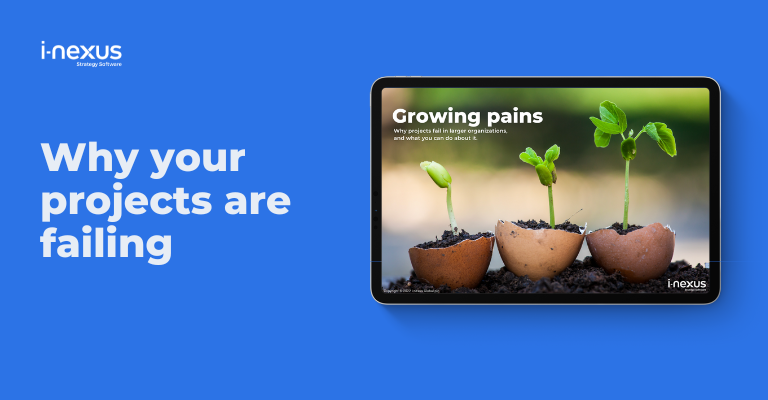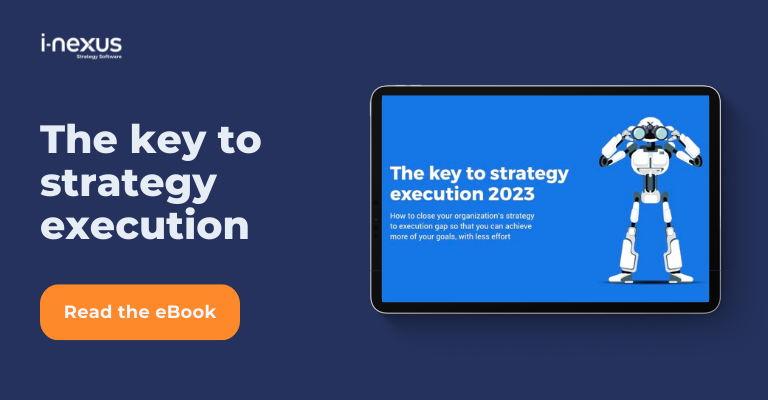Continuous improvement is a hot topic in the boardroom, yet project teams still struggle to deliver self-sustaining initiatives and improvement. These are the trends improvement, process, and project management teams need to know in 2023.
Written by: James Milsom, Head of Marketing
Most industries in 2023 will continue to attempt to deal with the impact of digital disruption.
As technology lowers the barriers to entry, agile predators can easily slip into new markets. These can take a bite out of larger incumbents’ market share.
To survive in these increasingly red ocean markets, players need to make themselves as lean and efficient as possible.
From a strategic perspective, the quest for efficiency puts a new emphasis on the world of operational excellence - Lean, Six Sigma, continuous improvement, process governance, and project management.
In the past, most organizations have struggled to achieve operational excellence because their continuous improvement was never truly continuous or sustainable.
Many initiatives seem initially successful, but as senior leaders’ attention moves on to the next project, the impetus for change dies, and the engine runs out of steam.
As we look ahead to 2023, however, signs are on the horizon that this is changing.
While delivering strategic value from operational work continues to be hard, more organizations are looking towards ways to deliver and sustain their operational efficiency gains. In this article, we’ll explore six key trends that could make 2023 the year when continuous improvement becomes truly continuous.
Six continuous improvement and project management trends for 2023
In summary, continuous improvement and project management in 2023 will be defined by six themes:
1) Governance will take center stage
2) Leadership behavior is the key to making improvements real
3) Project management methodologies will be better understood
4) Project management teams will embrace diversity
5) Organizations will place greater effort in sustained continuous improvement efforts from individual practitioners
6) Digital continuous improvement solutions and tools will gain wider adoption
Read on to learn why we’ve chosen these six trends to define the space in 2023.
1) Governance will take center stage
Strategy and project management teams increasingly recognize that continuous improvement initiatives aren't naturally self-sustaining: they'll only keep running if the business sees them as a priority.
The traditional way to ensure operational initiatives are taken seriously is to secure executive sponsorship, which is unsustainable. Senior leaders must be able to move on to new projects instead of babysitting the same initiatives forever.
Instead, we’ll see a move towards a more systematic approach.
The initial delivery of each project will include the construction of a rigorous governance framework. This will continue to monitor progress automatically and provide regularly updated metrics integrated into strategic reports and executive dashboards.
2) Leadership behavior is the key to making real Continuous Improvement
Humans naturally resist change.
With continuous improvement comes an obvious agenda of change.
A successful change program begins from the top down. When leaders encourage and live the 'correct' behaviors, the likelihood of achieving more goals increases.
When continuous improvement via Lean Six Sigma, for example, is adopted there requires a significant shift in an organization's mindset.
In 2023, management's position will proactively shift from simply supporting the idea of improvement to truly understanding the value of improvement. This will be through:
- Investment in suitable training and communication of initiatives
- Connecting operational work to the purpose and strategic goals of the organization
- Communicating the importance and value of improvement beyond $$$
- Active engagement in improvement initiatives
- Recognition and support of employees' day-to-day participation
- Investment in operational excellence solutions to drive engagement, participation, and success to feed a higher quality of standardized work.
3) Project management methodologies will be better understood in their role with continuous improvement
As continuous improvement rises higher on the corporate agenda, the methodologies for delivering it will become a matter of hot debate, not only within the project management office, but at all levels of the business.
Instead of each project team adopting its own favorite methodology, organizations will seek to standardize on a single, enterprise-wide approach.
Whether the ultimate decision is for Agile, Scrum, Lean, CPM, or a combination of tools from multiple methodologies isn’t important.
The key is that each organization needs to find an approach that fits with its strategic objectives and its operational needs, with this implemented consistently across all projects.
To achieve this, leadership buy-in is paramount. Project management offices will need to take responsibility for educating and raising awareness among senior management teams.
Resources from sites such as stratexhub.com can be a key tool in explaining the strengths and weaknesses of each approach, and help to build consensus among decision-makers.
4) Continuous improvement project management will draw strength from diversity
CI projects may be envisioned by the C-suite and delivered by the PMO, but their long-term impact depends on the operational teams responsible for their execution.
This means that each project has a diverse range of stakeholders, with different backgrounds, experience levels, priorities and concerns, who may become involved with the initiative at any point in its lifecycle.
For an initiative to succeed, all these stakeholders must be able to play their role.
Organizations will therefore look to adopt processes and technologies that make it easier to communicate, collaborate and contribute about projects, and ensure that a diverse range of perspectives are included in the decision-making.
5) Organizations will place greater effort in sustained CI efforts from individual practitioners
Regardless of the methodology and tools, driving ROI from investing in the training of your staff for the purpose of supporting project management is a natural desire for organizations.
It is a fundamental challenge of businesses across the globe to ensure that their project managers are well trained to ensure the maximum success of their initiatives.
With $97 million wasted for every $1 billion invested in projects, to stem the tide of searching outwards for project management contractors, it is logical to train your staff to deliver improvement. But, it is equally crucial that businesses employ these newly trained project managers to deliver sustained Continuous Improvement efforts.
To that end, we will continue to see the utilization of training and certification through qualified institutions, but a renewed focus on ensuring project managers regularly complete initiatives.
6) Operational excellence solutions will gain wider adoption
Traditionally, organizations have been resistant to the idea of adopting new technologies. This extends to those which support disciplines such as project management and continuous process improvement.
The general tendency has been to stick with well-worn, familiar technologies such as spreadsheets and email. Often this results from a fear that implementing new technologies will take too long, they are too costly, or project stakeholders will not be willing to learn new tools.
In a recent Industry Week article, survey results of 200+ manufacturing leaders. They reiterated that rising material costs, supply chain disruptions, and a changing labor market significantly impact revenue and operational costs.
With this in mind, two trends are making most organizations rethink this tech-phobic approach.
First, the delivery of strategic initiatives has become too important to be entrusted to tools ill-suited to that purpose.
Secondly, strategy software and purpose-built operational excellence solutions have matured to a point where they are much easier to implement, adopt and use.
For those involved in managing projects and a business' improvement, digital transformation brings the benefits of automating tasks and driving greater efficiencies in their tasks. However, more importantly, it frees up time, as TechRadar puts it, to:
“focus more on big-picture thinking and strategic planning instead of the nuts and bolts process work that used to be a hallmark of managing projects. [They] can do more with less, which means more focus on results and less on process work.”
For example, the i-nexus operational excellence solution provides leaders, managers, and shop-floor users the tools to standardize and accelerate improvement, linking work to strategic goals, and ensures project management and operational teams follow the organization's best practices and processes.
An intuitive mobile app then allows project participants to capture their progress against each goal, providing live status information that is automatically consolidated into higher-level reports and dashboards.
As a result, every stakeholder can instantly understand their performance, as well as how their programs and operational portfolios are truly helping to deliver continuous improvement.
What are the next steps?
To learn more about continuous improvement and operational excellence visit our knowledge hub and explore our resources below:
- Continuous improvement in the 2020s and beyond: Watch how continuous improvement will evolve into the 2020s and how you can be successful.
- DMAIC v Six Sigma v Lean: Our guide to the steps and tools you'll need when driving process improvement through one of these three methodologies.
- The leader's guide to continuous improvement: Download this eBook to get a comprehensive overview of how DMAIC, Six Sigma, Lean, PDCA can support your business in finding a competitive advantage.
About the author
James Milsom is Head of Marketing at i-nexus. James has wide-ranging experience in markets such as telecommunications, energy, education, and software.
As Head of Marketing, his drive is to raise awareness and understanding of the challenges facing enterprises in delivering strategic objectives and transformation amidst changing markets and the obstacles traditional tools and methods present leaders.
If you’d like to talk more about strategy execution, reach out to James via james.milsom@i-nexus.com or connect with him on LinkedIn for the latest insights.






